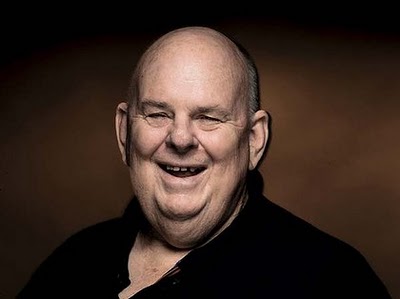J.M. Coetzee looks at "the angry genius" of Les Murray
Author J.M. Coetzee reviews two books by leading Australian poet Les Murray for The New York Review of Books: Killing the Black Dog: A Memoir of Depression and Taller When Prone: Poems, both from FSG. Coetzee first notes that Murray's "wholesale rejection of Modernism," upon giving Donald Allen's The New American Poetry and its inclusions only a cursory, dismissive glance upon arrival in Australia, "may seem to mark him as simply an isolated provincial conservative swimming against the tide of the times":
In Gary Snyder, for instance, Murray detected the “almost affectless equanimity of the uprooted modern person”—about as thorough a misreading of Snyder as is possible. But Murray was using Allen’s poets only as stand-ins for a larger and vaguer target: the Modernist sensibility, the Modernist worldview. Modernists, in his dismissive diagnosis, wrote out of a “pathological state [of] depression.” “Modernism’s not modern: its true name’s Despair.”
But the substance of his response seems more, according to Coetzee, about returning to a ballad tradition, one that "celebrated the life of the mounted frontiersman (or his outlaw cousin the bushranger)." Coetzee writes of Murray's own work:
...But in pitting the ballad tradition against the Modernists, Murray was calling on Australian poetry to follow its own native course and foster its own native values, including an optimistic expansiveness that turned its back on both the “narrow ways” of the old Mother Country and the cramped despair of the Modernists, and a no-nonsense egalitarianism, suspicious of all pretensions, including intellectual pretensions. (Of the three rallying cries of modern democratic revolutions, equality has always had more resonance in Australia than liberty.)
Curiously, lone horsemen are pretty much absent from Murray’s own poetry. For him the totemic beast has been not the horse but the cow, which stands for domesticity rather than solitude, settlement rather than exploration. One of his most ambitious poems, the sequence “Walking to the Cattle Place” (1972), traces the line of descent of Australian cattle farming back to the cattle cultures of ancient India and Grecian Boeotia. Boeotia, sneered at by its rival, Athens, as rustic and unsophisticated, is elected by Murray as his spiritual birthplace, a shining example of a decentralized, rurally based polity.
If the good people of rural New South Wales (where Murray is from) are the Boeotians, and Murray is their Hesiod, then the Athenians are represented by the Sydney intelligentsia. “The educated caste,” writes Murray, “has been able to free itself from the older [land-owning] Establishment and become a dominating, oppressing power in its own right,” conducting all-out war on “vernacular Australia”. . . .
Coetzee goes on to refute Murray's presentation of himself as an intellectual outsider, citing his various public roles in poetry and academia. And this is when the review really gets going:
The self-authored myth of how Murray of the many wiles evaded the Enlightenment, resisted the lures of the Ascendancy, fought off the Modernists, traveled the world, saw many sights, and returned at last to his own Ithaca forms the backbone of a not incon-siderable oeuvre: a five-hundred-page Collected Poems (2002) plus two later collections (2006, 2010); two novels in verse; and a body of essays on literary and political subjects.
Interestingly, Coetzee feels Murray owes a large debt to "poet-priest" Gerard Manley Hopkins:
In a number of important poems from the early 1980s, Murray explores the state of mind (or of spirit) in which the poet makes contact with the divine. The key terms here are grace and equanimity, abstractions to which his poems essay to give body. The poem “Equanimity”—which in its very tone is a model of even-spiritedness—concludes with a suggestion to us his readers that if we find the spiritual state of equanimity as difficult to grasp via the rational intellect as it is hard to achieve by an effort of the will, we may find it
more natural to look at the birds about the street, their life
that is greedy, pinched, courageous and prudential
as any on these bricked tree-mingled miles of settlement,
to watch the unceasing on-off
grace that attends their nearly every movement,
the same grace moveless in the shapes of trees
and complex in our selves and fellow walkers: we see it’s indivisible
and scarcely willed. That it lights us from the incommensurable
we sometimes glimpse, from being trapped in the point
(bird minds and ours are so pointedly visual):
a field all foreground, and equally all background,
like a painting of equality. Of infinite detailed extent
like God’s attention. Where nothing is diminished by perspective.We should not be dismayed, suggests Murray, by the elusive, flickering, on-off quality of our contact with the numinous. Rather, we should learn to wait with equanimity—as poet or as believer—for the next flash of grace. Poetic insight and revelation are both, by their nature, “intermittent,/as the action of those birds—crested pigeon, rosella parrot—/who fly with wings shut, then beating, and again shut.”
Read more about Murray's interest in Aboriginal cultural forms and how his verse novel Fredy Neptune (1998) is on the model of Voltaire’s Candide, as well as the rest of Coetzee's thorough take on Murray's output here.



